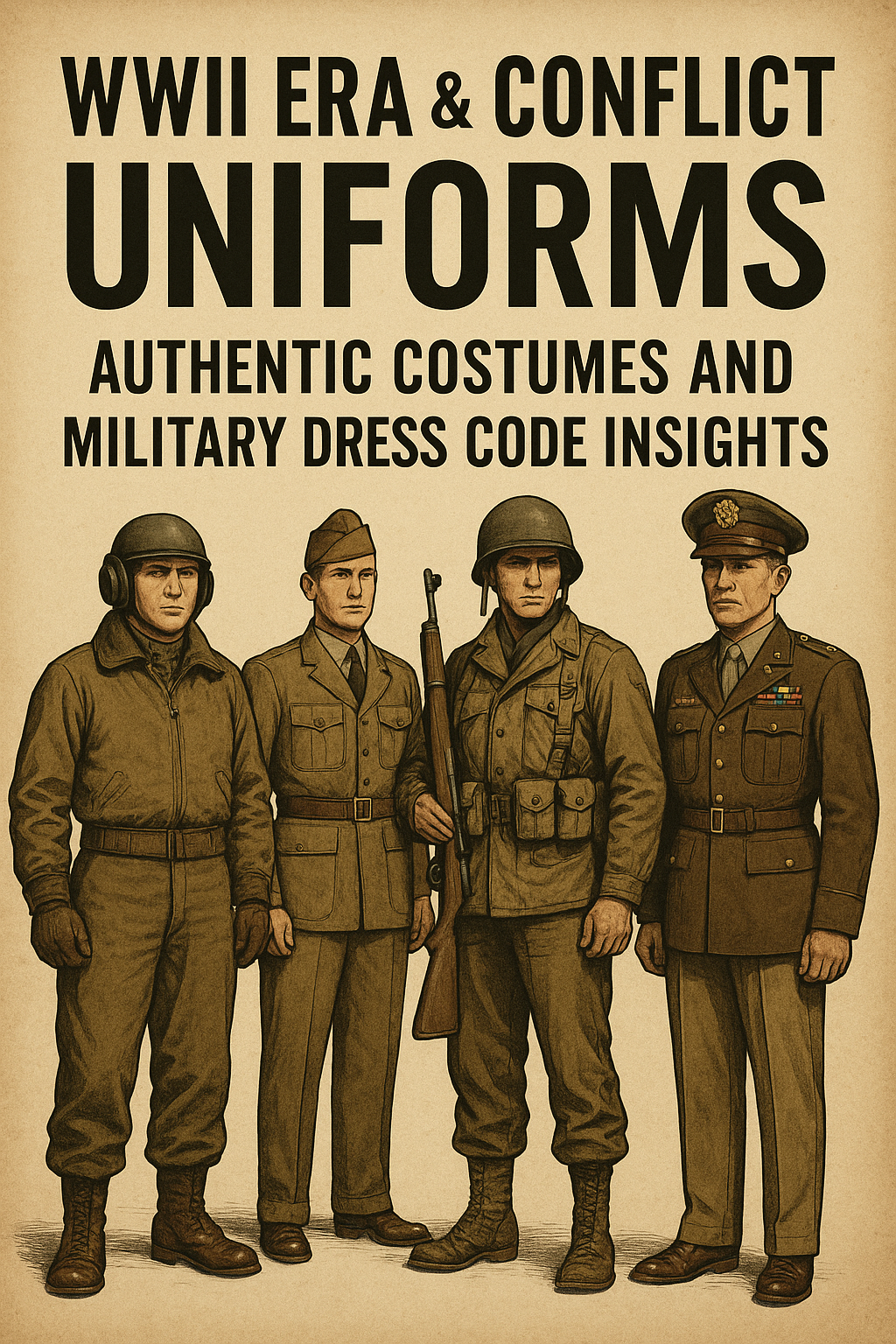
WWII Era & Conflict Uniforms: Authentic Costumes and Military Dress Code Insights
Published on Apr 30, 2025
WWII Era & Conflict Uniforms: Authentic Costumes and Military Dress Code Insights
Military uniforms have always been more than just clothing. They symbolize discipline, identity, rank, and history. Among the most iconic of these are the uniforms from the World War II era—a time of global conflict, sacrifice, and innovation. Whether you're a collector, history buff, or someone interested in military reenactment, understanding the evolution of military attire during times of war—especially WWII—can provide a rich glimpse into the past.
In this article, we’ll explore:
- The significance of World War 2 costumes
- The iconic WWII tanker uniform
- The modern dress code for Army personnel
- Whether you can wear your duty uniform off-base
- And how Paddelaters provides authentic war-era uniforms for enthusiasts and professionals alike
The Legacy of World War 2 Costumes
World War II uniforms represent a transformative era in military apparel. Designed for functionality and resilience, these uniforms varied depending on branch, role, and environment. From the front lines of Europe to the Pacific islands, soldiers were equipped with specialized gear that reflected the demands of the battlefield.
At Paddelaters, we specialize in crafting historically accurate WWII uniforms that pay tribute to those who served. Whether you're attending a reenactment event, participating in film production, or simply want to own a piece of history, our World War 2 costumes offer unmatched authenticity.
Key Elements of WWII Uniforms:
- Wool service coats and trousers
- Canvas and leather accessories
- Steel helmets (like the M1)
- Division insignias and rank patches
- Combat boots or service shoes with gaiters
Authenticity matters when it comes to World War II costumes—not only for aesthetics but also for honouring the soldiers who wore them. Every stitch and fabric choice tells a story.
Spotlight: The WWII Tanker Uniform
One of the most sought-after styles in WWII military fashion is the WWII tanker uniform. These were specially designed for armoured vehicle crews who needed both flexibility and insulation inside cramped metal tanks.
Characteristics of a WWII Tanker Uniform:
- Jacket: The famous tanker jacket, typically made of OD (olive drab) wool and lined with a warm blanket or alpaca wool.
- Trousers: Wool or cotton pants with reinforced knees for durability.
- Helmet: Often, a padded tanker helmet is worn under a steel pot for protection.
- Gloves and boots: Insulated leather gloves and lace-up combat boots for maneuverability.
These uniforms weren’t just practical—they became iconic. Even modern-day military and fashion circles draw inspiration from the rugged, utilitarian look of the tanker jacket.
At Paddelaters, our WWII tanker uniforms are crafted using original patterns and materials to ensure historical accuracy for collectors, museums, and reenactors.
Dress Code for Army: Then and Now
The military dress code has evolved significantly since WWII, but it still maintains a strong sense of discipline and tradition. The U.S. Army, like other branches, has clear regulations about how and when uniforms should be worn.
WWII Dress Code Highlights:
During WWII, soldiers had multiple uniforms:
- Field uniforms for combat
- Service uniforms for formal or daily non-combat use
- Dress uniforms for ceremonies and special occasions
Each uniform came with strict guidelines for cleanliness, fit, insignia placement, and usage. Uniformity was essential not only for appearance but also for cohesion and identification in chaotic environments.
Can You Wear Your Duty Uniform in the Army Today?
A common question among recruits and civilians is: Can you wear your duty uniform off-duty or in public?
The Short Answer: It Depends
According to current Army Regulation 670-1, soldiers can wear their duty uniforms in public under certain conditions:
- They must positively represent the Army.
- They must not be engaging in controversial or off-duty conduct (like political rallies).
- Uniforms should be clean, presentable, and complete.
However, there are restrictions:
- Wearing uniforms in bars, clubs, or similar places is generally prohibited.
- Soldiers can wear them during official travel, ceremonies, or when commuting between home and duty station.
Historical Note: During WWII, uniform use off-base was more flexible but still subject to regulations. Soldiers were often required to stay in uniform during travel or public appearances to maintain the Army's image.
At Paddelaters, we ensure that all our costume pieces reflect the correct period usage while respecting modern rules and sensitivities regarding uniform wear.
Why Choose Paddelaters for Your WWII Uniform Needs?
As interest in military history grows—through reenactments, documentaries, cosplay, and educational projects—so does the demand for accurate, well-crafted military costumes.
Here’s What Sets Paddelaters Apart:
- Authenticity: We use vintage patterns and materials whenever possible.
- Detail-Oriented: From insignias to stitching, every item is curated for accuracy.
- Educational Value: Great for museums, history classes, or veteran events.
- Wide Range: From tanker uniforms to infantry gear and ceremonial dress.
Whether you're portraying a WWII tanker or simply want to understand the dress code of past and present Army life, Paddelaters provides the resources, knowledge, and products to bring history to life.
Conclusion
WWII uniforms are more than relics—they’re tangible connections to the stories of sacrifice, strategy, and brotherhood that defined an era. Whether you’re curious about the dress code of the Army, wondering whether current soldiers can wear their duty uniform in public, or looking to acquire an authentic WWII tanker uniform, understanding these elements helps keep the legacy alive.
